Soft, sweet, and slightly spicy, cinnamon rolls are arguably the best pastries out there. Whether you like them drizzled with syrup or with a dollop of cream cheese, cinnamon rolls are perfect for breakfast, dessert, or just a snack!
But what if you can’t have gluten? Not to worry, gluten-free cinnamon rolls are here to save the day.
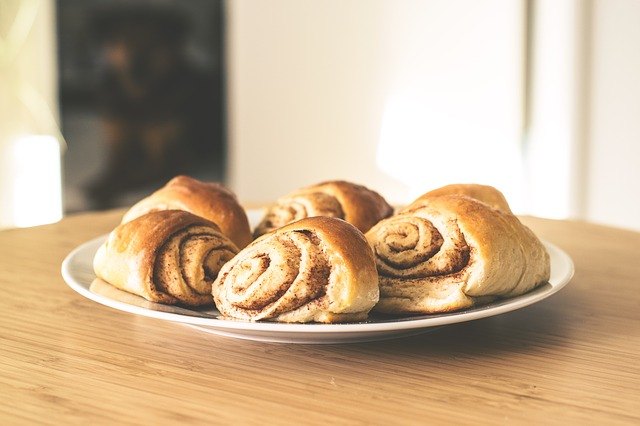
These GF cinnamon rolls use xanthan gum, which is perfect for those with Celiacs disease or a general intolerance to gluten.
Paired with the right ingredients and baked with a lot of love, these gluten-free cinnamon buns taste just like the gluten version—and perhaps even better.
Contents
How to Make Gluten-Free Cinnamon Rolls
Gluten-free recipes aren’t always the best when it comes to soft, chewy baked goods, but it is certainly possible!
Here, we have compiled the best gluten-free cinnamon rolls recipes, plus some variations, so you can enjoy the delicious pastry without compromising your health.
Easy Gluten-Free Cinnamon Rolls Recipe
This gluten-free cinnamon roll recipe is great for those who are just beginning their foray into the GF scene.
Ingredients
Dough
- ¼ cup of butter.
- 1 cup of milk.
- 1/3 cup + 1 tablespoon of sugar.
- 2 ¼ teaspoon of active dry yeast.
- 1 large egg.
- 2 ½ cups of gluten-free baking flour.
- 2 teaspoon of baking powder.
- ¼ teaspoon of salt.
Filling
- a ½ cup of sugar.
- 2 tablespoon of cinnamon.
- 1/3 cup of butter, softened.
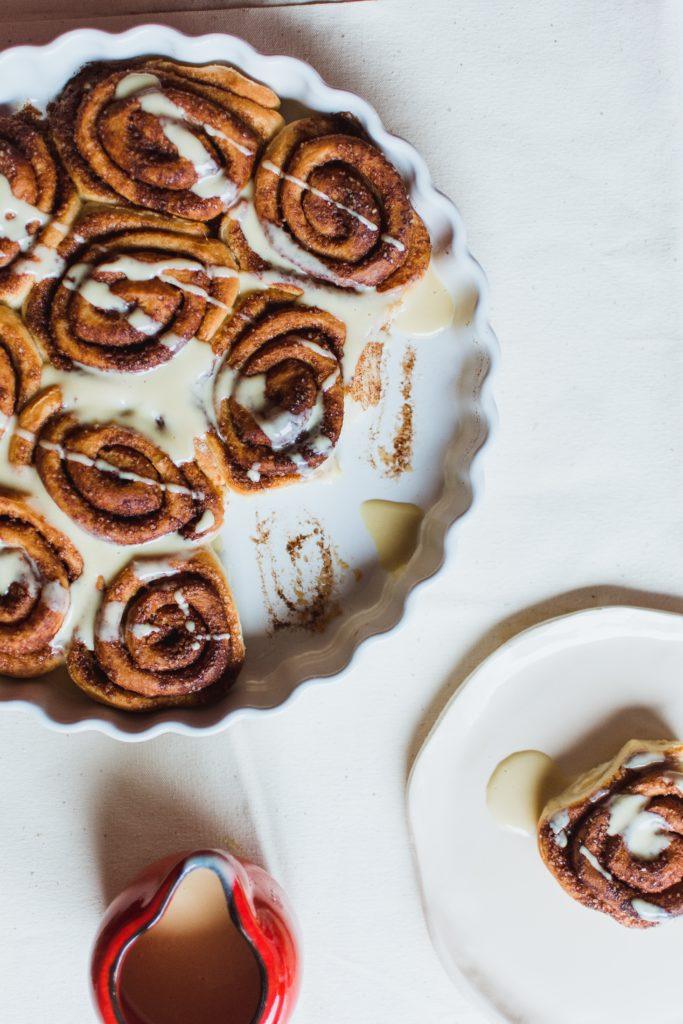
Procedure
- Microwave the butter into a large glass bowl to melt. Then, add milk and 1 tablespoon of sugar. Microwave for about 50 more seconds to melt the sugar, and stir. Let the bowl cool until it is warm to the touch, at about 110 degrees Fahrenheit.
- Add in the active dry yeast. Allow the mixture to foam for about ten minutes. If it doesn’t foam, it means the yeast isn’t active; create a new batch, making sure that your temperature is just right. If not, you’ll have to buy a newer batch of yeast.
- Once your yeast has foamed, add 1 whisked egg and the rest of the sugar. Stir until the sugar is melted.
- In a different bowl, stir in the dry ingredients. Add the gluten-free baking powder, the baking powder, and salt. Add in this mixture to the first bowl, slowly. Make sure that all the dry ingredients are mixed before adding in more. Stir this mixture until you reach a consistency like cookie-dough; it should be soft, but not too sticky.
- Cover the bowl with plastic wrap, and set it aside to rise for about an hour. The dough should have at least doubled in size. To hasten the rising time, place it in an oven over low heat, or on top of a heating pad. A sunny windowsill should also work well.
- Once your dough has risen, set up your counter. Lay out some parchment paper and spray its surface with nonstick spray. Lightly oil your hands and transfer the dough to the parchment paper. Roll the dough into a rectangle about ¼-inch in thickness. Don’t roll too thin, or else the rolls won’t puff up well in the oven!
- Next, spread the softened butter on the surface of the dough. Then, add a layer of sugar and cinnamon on top of the butter.
- Now it’s time to roll! Take one edge of the longer side of the parchment paper and lift the dough slightly, so that you have your first roll. Continue rolling the dough by pushing along the outer edge of the parchment paper.
- Once you have rolled your dough, take a sharp serrated knife or some dental floss and try to slice the dough into equal pieces. To keep your cuts clean, create one straight cut through the dough instead of moving your knife or floss back and forth. If you find your dough sticking to your knife, you could dust it with some flour.
- Gently transfer the dough into a 9-inch pie pan. Let the dough rest for about 30 to 40 minutes.
- Bake the rolls for 16 to 20 minutes at 350 degrees, rotating the pan 180 degrees halfway through.
- Combine the ingredients for the icing in one bowl, and spread it on top of your rolls. If you choose to add icing, make sure to let it cool, or else your dough will absorb it!
Here’s another example of how to make gluten free cinnamon rolls.
Cinnamon Roll Variations
If you’re tired of the usual cinnamon rolls, there are many variations that you can try instead!
Being gluten-free doesn’t mean you’re stuck with the same recipe. Here are some GF cinnamon roll variations that are all still very tasty.
Vegan Gluten-Free Cinnamon Rolls
Cinnamon rolls don’t’ just have to be gluten-free; they can be vegan, too! This recipe is based on the Minimalist Baker’s Vegan Gluten-Free Cinnamon Rolls.
For the complete recipe, check out the original post here!
These cinnamon rolls taste just as good—perhaps even better–than ones made with wheat; a mix of gluten-free flour and almond flour (for added texture) makes this recipe a star.
Ingredients
Wet
- A ¾ cup of dairy-free milk.
- 2 tablespoons of cane sugar.
- 1 tablespoon of butter.
- 2 ¼ teaspoons (or 1 packet) of active dry yeast.
Dry
- 2 cups of gluten-free flour.
- A ¾ cup of almond flour.
- 2 tablespoons of cane sugar.
- 2 ½ teaspoons of baking powder.
- ½ teaspoon of sea salt.
- 4 tablespoons of vegan butter, chilled.
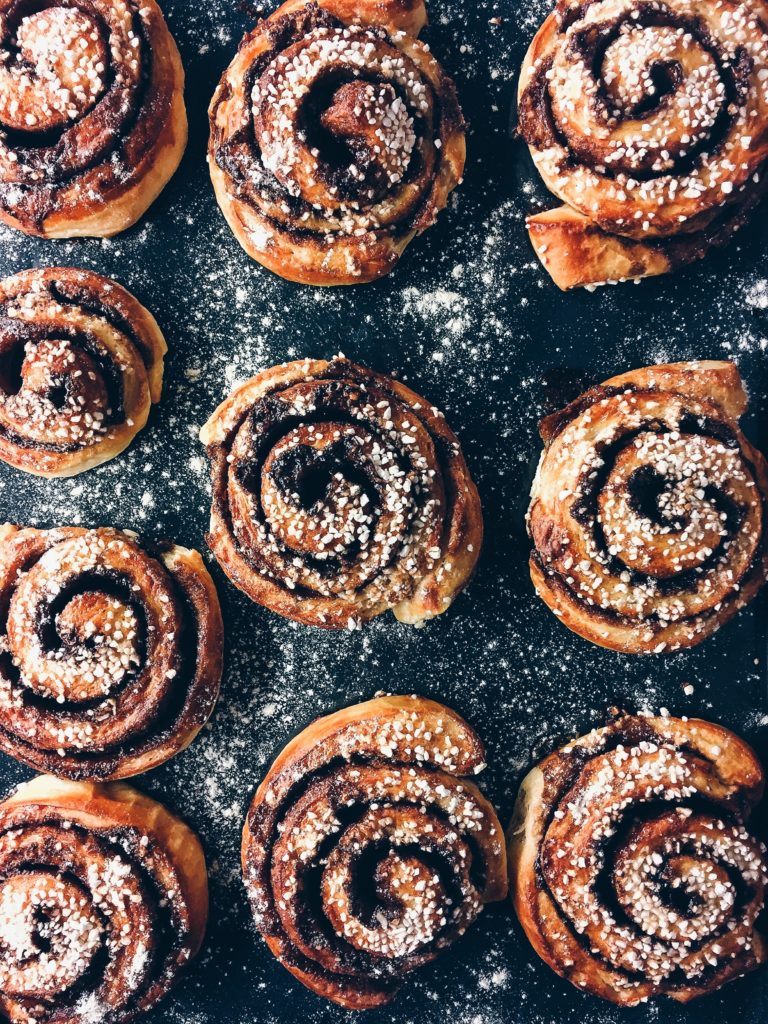
Cinnamon Filling
- 3 tablespoons of vegan butter, melted.
- 2/3 cup of brown sugar.
- 1 tablespoon of ground cinnamon.
- Cream cheese frosting.
- 3 cups of powdered sugar (add more to thicken syrup).
- 1 tablespoon of butter.
- 1 to 3 tablespoons of milk (add more to thin syrup).
Procedure
- Preheat your oven to 350 degrees Fahrenheit. Lightly brush either a standard pie plate or a round baking dish with butter. Set aside.
- Heat your milk, either in the microwave or on a stovetop to about 110 degrees Fahrenheit. Make sure that it doesn’t exceed this temperature, or else you’ll kill the yeast.
- Once you’ve heated the milk, add butter and sugar. Stir until all ingredients have melted. Add the yeast, and stir. Set aside to proof for about 10 minutes. Do not cover the container. The liquid should poof, or bubble. If not, your yeast has expired or your liquid was too hot.
- In a medium mixing bowl, whisk together your gluten-free flour, almond flour, cane sugar, baking powder, and sea salt. Add in the cold butter slowly with a fork or pastry cutter. Once all your ingredients are incorporated, your mixture should have the texture of wet sand; slippery but still mostly intact.
- Once your dough has reached this consistency, slowly add in the milk and yeast mixture. Once it has fully incorporated, your dough should be pliable enough to be rolled into a ball. If it is too slippery, slowly add gluten-free flour to your mixture.
- Now you’re ready to roll out your dough! To prepare your counter, take a large cutting board and wrap it with plastic wrap, tucking in the edges under your board. Then, dust the surface with gluten-free flour.
- Place the dough on the center of your board, and sprinkle with gluten-free flour. Then, cover your dough with another layer of plastic wrap and tuck the edges under the board as well. This layer of plastic wrap will prevent your dough from sticking to your rolling pin.
- After rolling, slowly remove the top layer of plastic wrap. Brush butter on the surface of the dough, and add a layer of cinnamon and brown sugar.
- Untuck the bottom layer of plastic wrap from under the cutting board, and pull from one corner, so that the dough rolls in on itself. Continue rolling the dough.
- Cut the roll into equal sizes using floss or a serrated knife. Gently transfer each cut into your prepared pan.
- Cover the pan with plastic wrap and wrap with a towel. Set on top of a warm oven to proof. Let it rise for about 30 minutes, or until the rolls are touching each other slightly.
- Once they have risen, bake the rolls. Place the pan in the middle of the oven rack and bake for about 30 to 35 minutes.
- If you want to add frosting, let it cool for about 20 minutes. If not, you could eat them as soon as they are cool!
Sourdough Gluten-Free Cinnamon Roll
Using a sourdough starter is an excellent way to create gluten-free cinnamon rolls. The sourdough creates a savory bun, making it a perfect pair for the cinnamon filling.
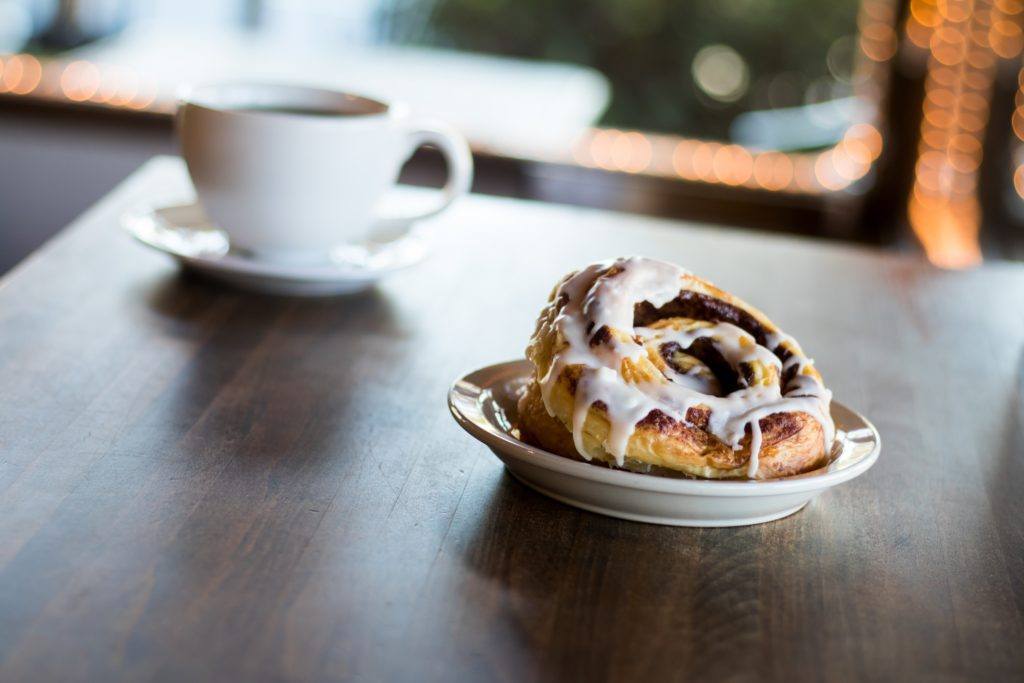
Creating a soft and chewy bun while keeping the recipe gluten-free can be a challenge, but sourdough checks off all the boxes by being tasty and gluten-free.
Sourdough also adds a dimension of flavor that rivals most cinnamon roll recipes, gluten-free or otherwise.
This is a simple recipe that doesn’t require any hard-to-find ingredients. A sourdough starter, xanthan gum, gluten-free flour, and a few kitchen staples are all you need to bake these tasty rolls. Let’s get started!
Ingredients
Dough
- 1 cup of sourdough starter.
- 3 ½ cups of gluten-free flour mix.
- 2 eggs.
- A ¼ cup of sugar.
- 6 tablespoons of unsalted butter, melted.
- 1 tablespoon of xanthan gum.
- ½ teaspoon of baking soda.
- ¾ teaspoon of salt.
Filling
- 1 cup (packed) of light brown sugar.
- 1 tablespoon of ground cinnamon.
- 1 ½ tablespoon of salted butter, melted.
Procedure
- In a large bowl, combine all the ingredients for the dough. Then, add in the starter. Mix thoroughly until the dough has a firm consistency.
- Leave the dough to ferment for 2 to 4 hours at room temperature. The dough can also be left for long periods in the fridge – for up to 24 hours.
- After fermenting, line a medium-sized rectangular pan with parchment paper. Sprinkle the pan with flour. Roll the dough in the pan, and brush its surface with melted butter. Layer cinnamon and sugar on the surface of the dough.
- Roll the dough along its wider side to create a cylinder. Squeeze the dough to even out the layers.
- Slice the cylinder into rolls; this recipe should make about 12 rolls. Place the rolls into a glass dish, cut side down.
- Bake them at 350 degrees Fahrenheit for about 30 to 40 minutes.
Storage
You can store these cinnamon rolls at room temperature for about 3 to 4 days. For longer shelf life, place the rolls in a freezer for up to a month.
You can also prepare an uncooked batch beforehand. Follow the recipe until you have cut the dough.
Place the rolls in a baking sheet lined with parchment, place this sheet inside a freezer-safe bag or container, and freeze for up to a month.
Here’s a video showing an example of a vegan gluten free cinnamon roll recipe.
Bread-Maker, Stand Mixer, Or Hand-Mixed?
Kneading is a science in and of itself, but gluten-free bread is more challenging. Gluten-free recipes use xanthan gum to create the texture of gluten, but handling it the same way as gluten can be disastrous for your recipe.
Here are two few things that you should keep in mind when working with xanthan gum:
- Gluten-free bread does not need to rise twice. Instead of two rises, gluten-free bread needs more mixing time, but only one rise cycle.
- Xanthan gum can mimic the taste and texture of gluten recipes, but they do so on a bell curve. Too much or too little mixing can be disastrous for your recipe. Of course, it is possible to overwork doughs with gluten, but there is an even smaller window with xanthan gum.
For these reasons, it’s better to mix your dough with a hand mixer, especially if it’s your first time working with gluten-free dough.
Stand mixers can easily overwork gluten-free doughs, making your bread tough and gummy. It’s also best to stay away from bread-mixers.
Since gluten-free doughs only have one rise cycle, typical bread mixers do not have the setting to handle gluten-free dough.
If you want to use your bread-maker, make sure that it has a gluten-free setting. Otherwise, you will find yourself with a dough that it is too tough to chew.
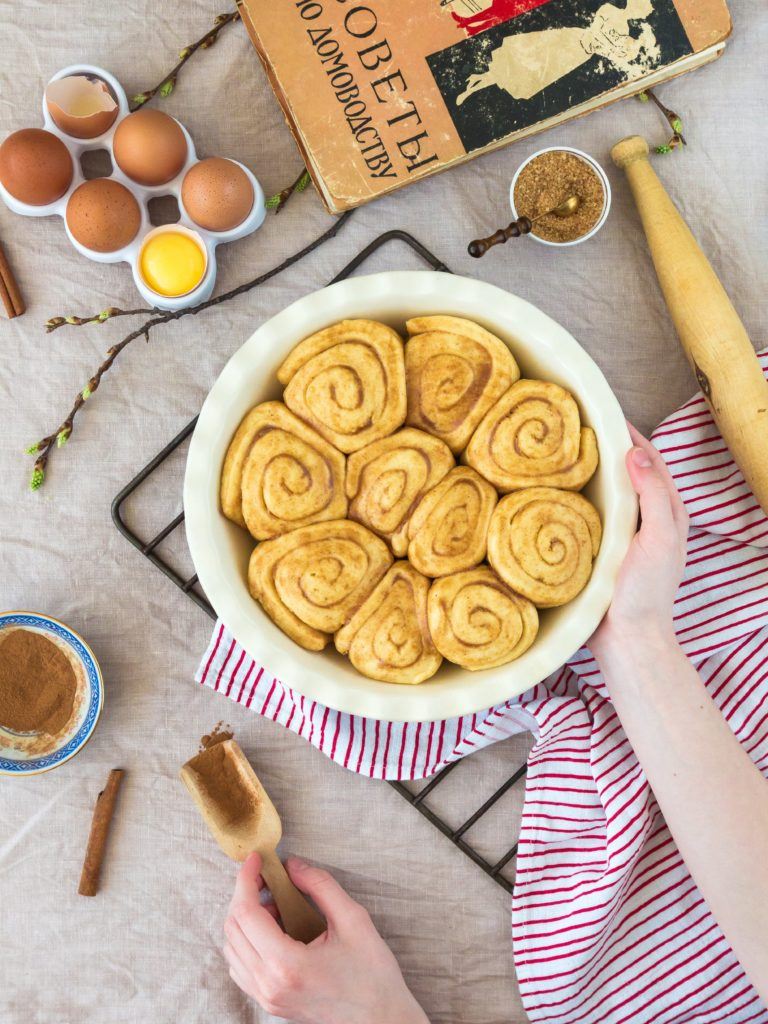
Conclusion
Hopefully, this has helped you create your own gluten-free cinnamon rolls.
Remember, being gluten-free means you can still have your cinnamon rolls! So take out your ingredients, and have fun baking!
What’s your favorite way to make gluten-free cinnamon rolls?
